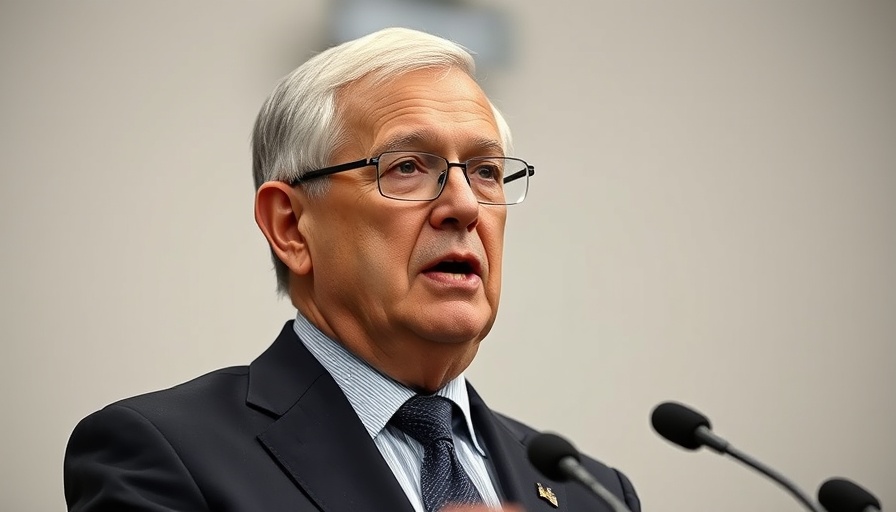
Understanding Powell's Central Position on Rate Cuts
Federal Reserve Chair Jerome Powell conveys a cautious stance on further interest rate cuts, indicating that he will maintain this position until there is increased clarity regarding the evolving economic landscape under former President Donald Trump's policy changes. Amid rising economic uncertainties tied to Trump's tariff plans, Powell's approach suggests that the Federal Reserve is committed to a wait-and-see strategy. This is a sentiment echoed by Goldman Sachs economists who foresee that looming tariff measures may hinder economic growth while simultaneously altering inflation expectations.
The Impact of Tariff Policies on Economic Outlook
As markets digest potential tariffs—some as high as 25%—the economic implications become clearer. Powell noted that tariffs can produce a one-time price hike, but they could also influence longer-term inflation expectations. If these duties morph into more significant, recurrent increases, they could affect consumer behavior and business costs alike. Powell’s assertion that the Fed can afford to be patient highlights a critical recognition of the interconnectedness of these policies and their potential risks.
Market Reactions and Economic Predictions
Market analysts quickly adjusted their predictions for future interest rate cuts as Powell's comments on remaining patient circulated. After previously betting on multiple cuts due to softer economic reports, many traders recalibrated their expectations following Powell's remarks. The uncertainty over tariffs is not just an academic exercise; it has real consequences on market dynamics, prompting appearances of volatility in Treasury yields.
Unpacking Concerns with Consumer Sentiment Amid Fluctuating Job Markets
Despite a relatively robust jobs report with 151,000 jobs added, concerns linger about consumer confidence. Economic evidence points to a slowdown in consumer spending, coupled with rising costs of everyday essentials. The sentiment of consumers is crucial as it directly influences spending behavior, central to an economy that thrives on consumer expenditure.
The Broader Picture: Navigating Uncertainty and Seeking Stability
The dynamics of Powell's decisions extend beyond mere interest rates; they delve into broader economic implications for the U.S. His strategy embraces a need for understanding as economic signals sharpen. With corporations adapting to governmental changes, both businesses and consumers can expect fluctuations that may call for adjustments in strategy—be it in budgeting for larger expenses or pivoting operational focus in anticipation of regulatory shifts.
In conclusion, as business professionals navigate these turbulent waters, staying informed about changes in monetary policy and economic forecasts becomes imperative. By understanding Powell's current stance and the potential effects of Trump's policies, they can prepare for corresponding strategies that ensure both resilience and growth. Add Row
Add Row  Add
Add 



Write A Comment